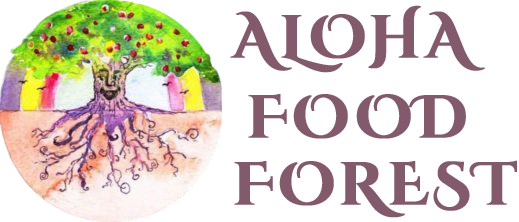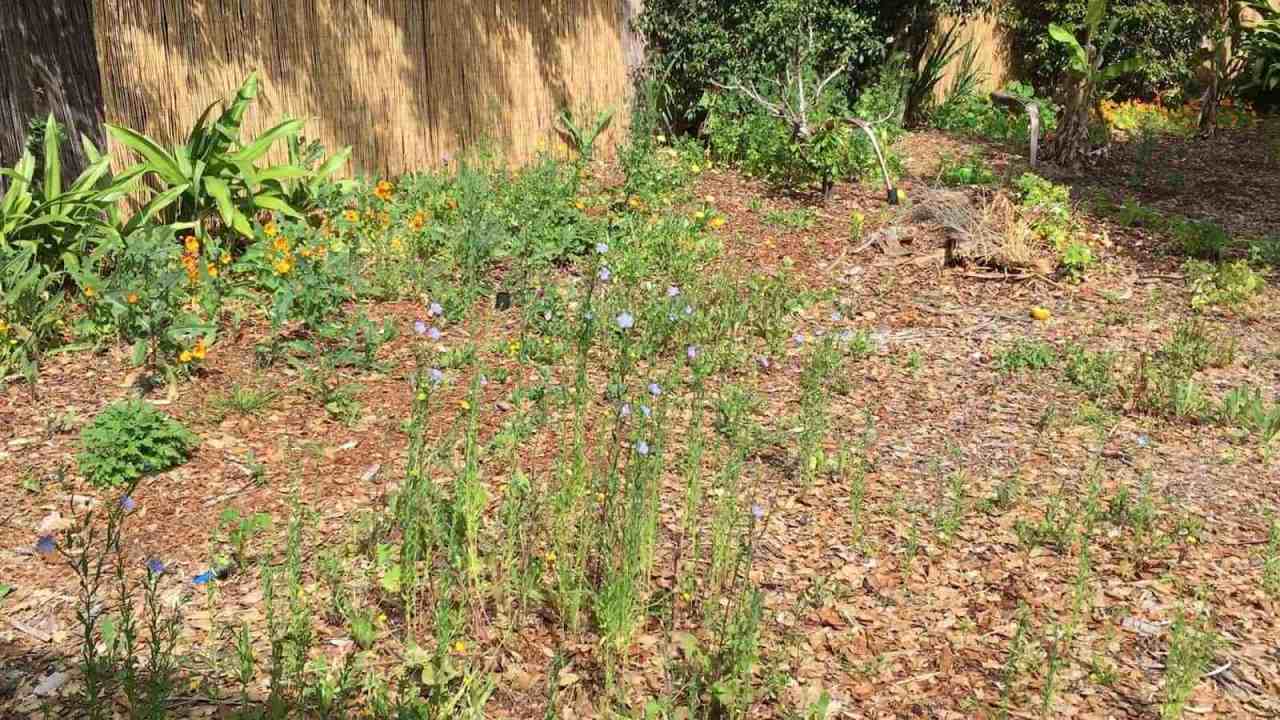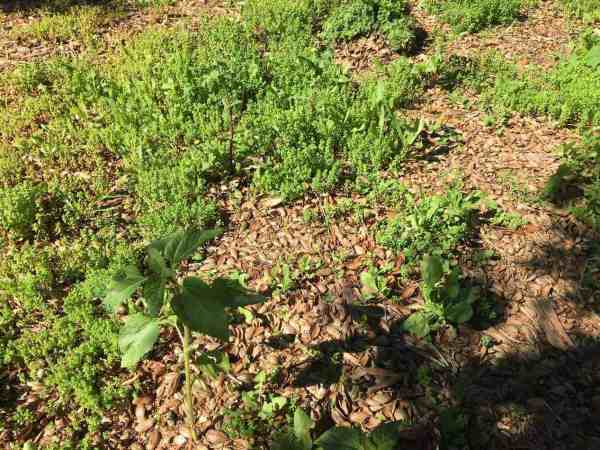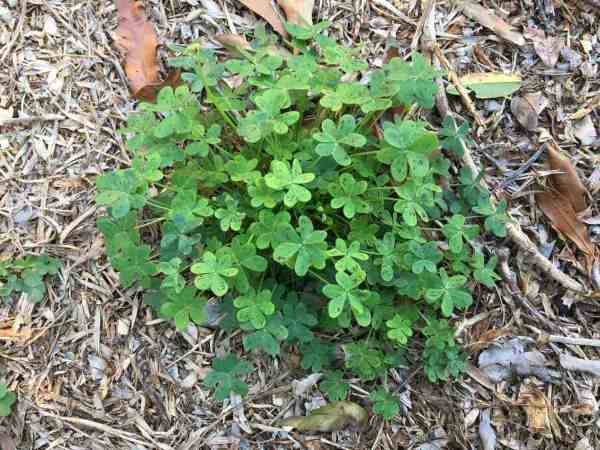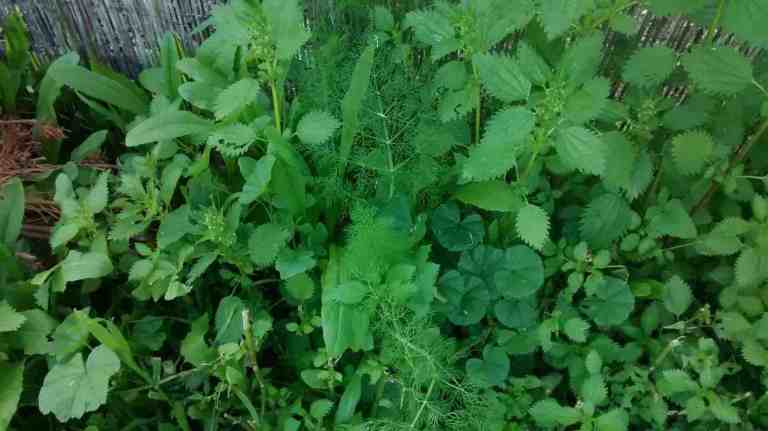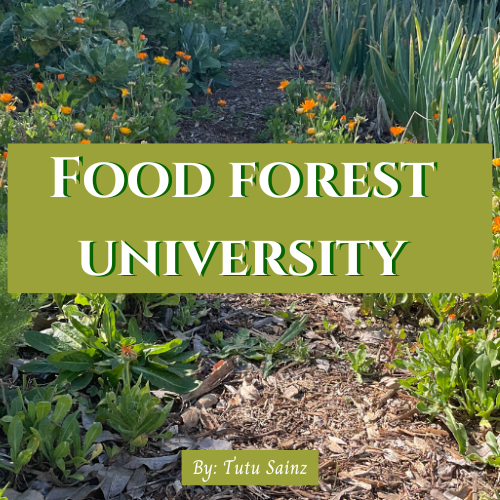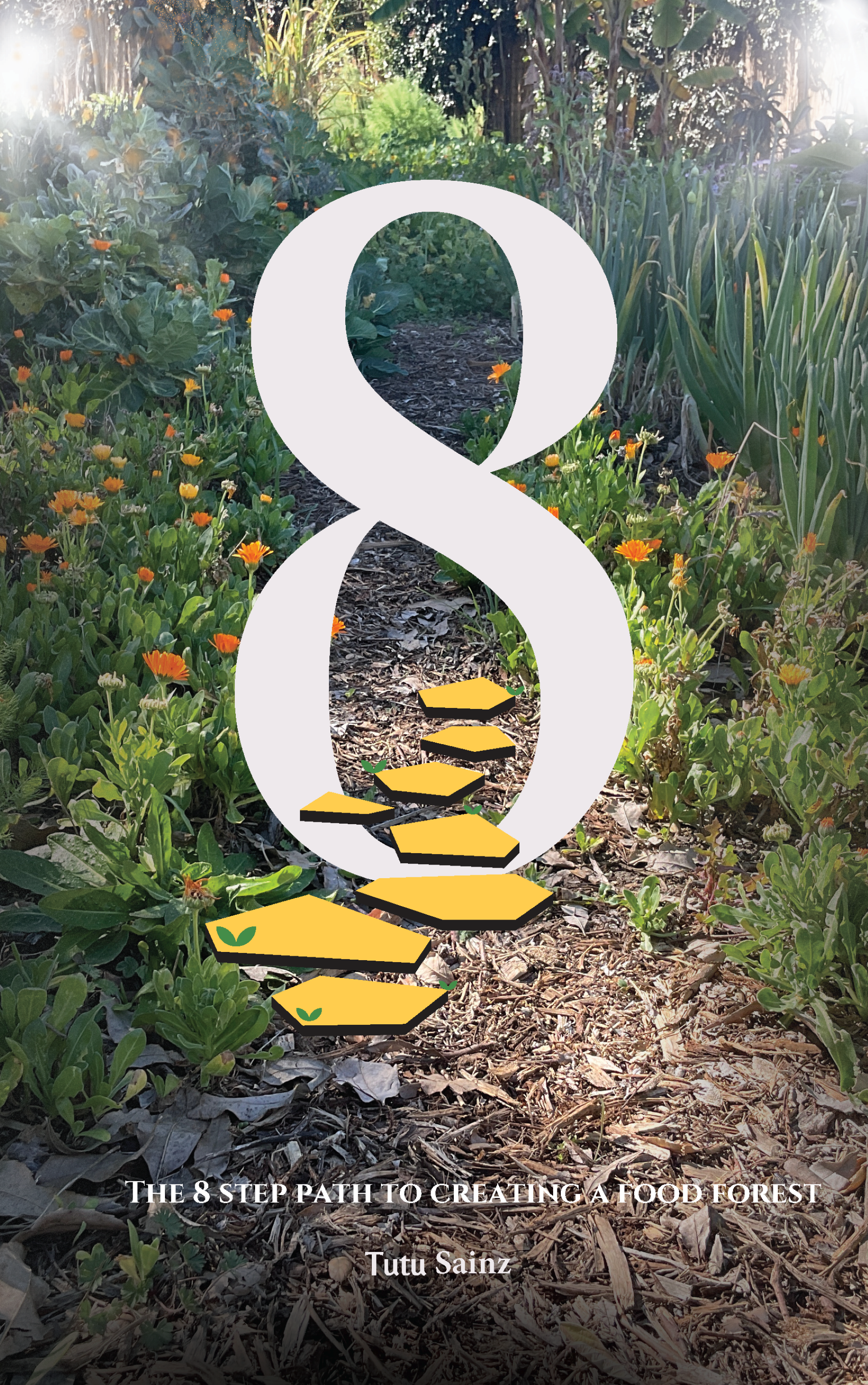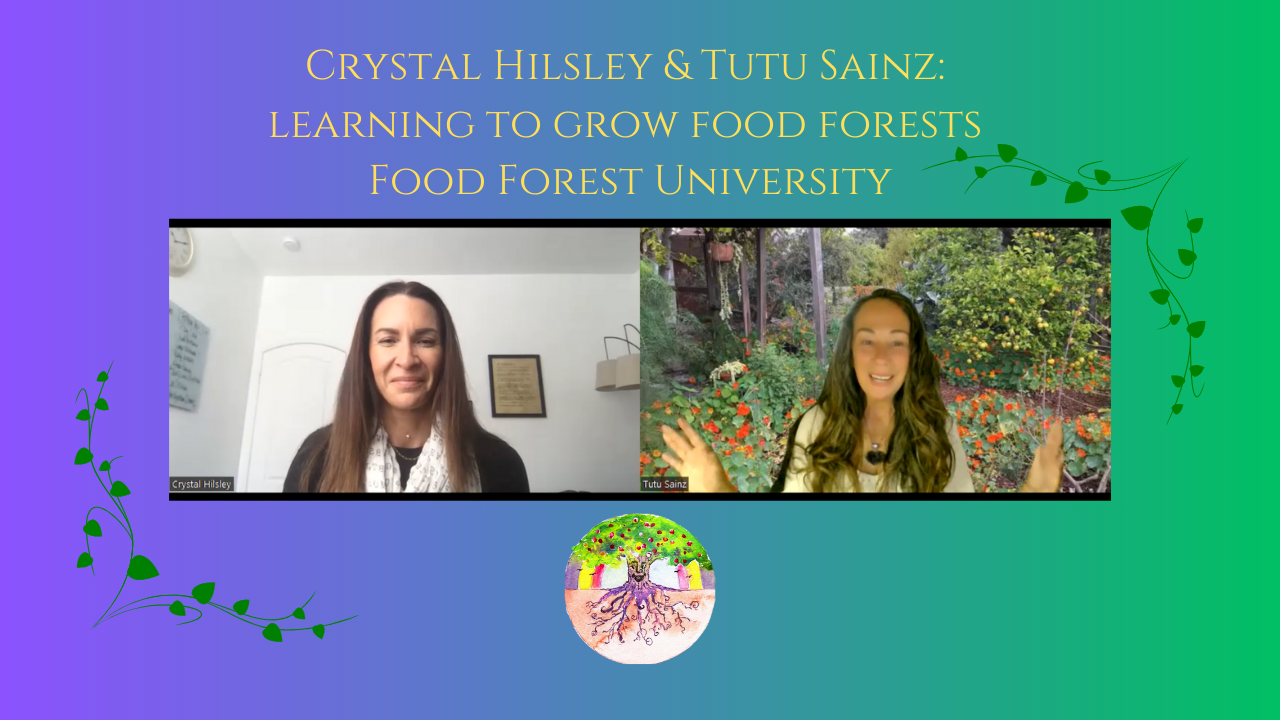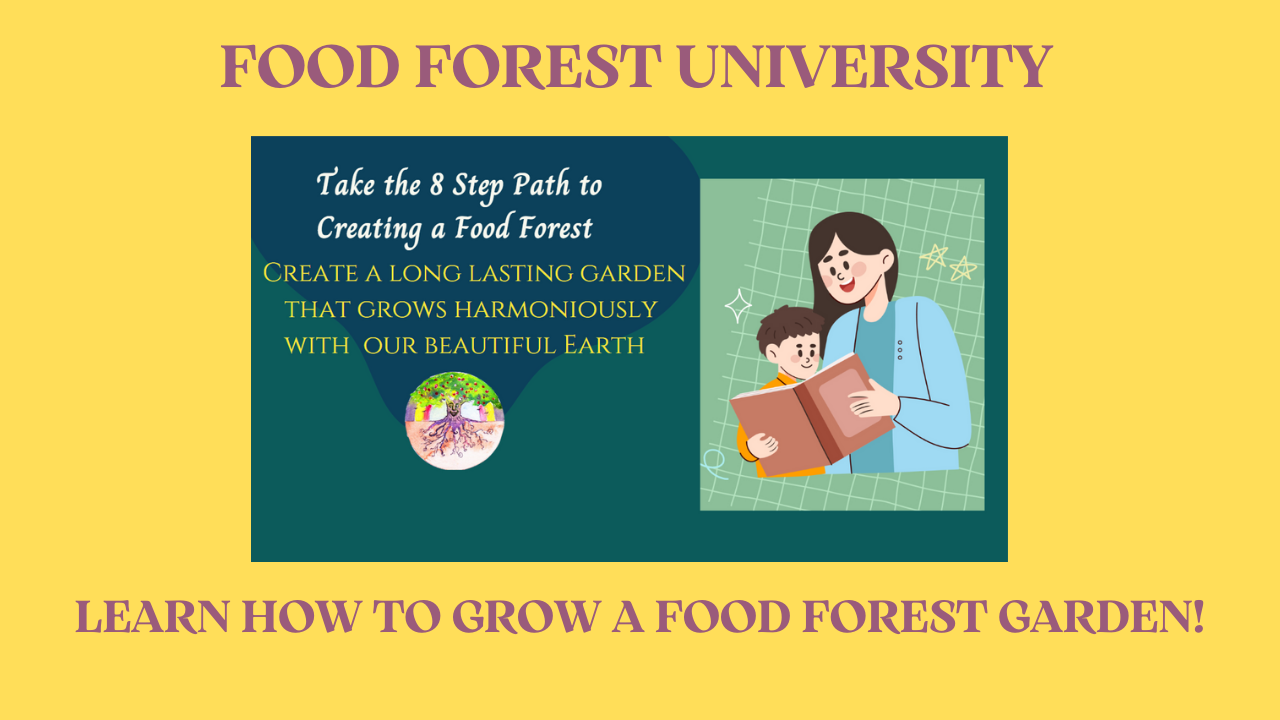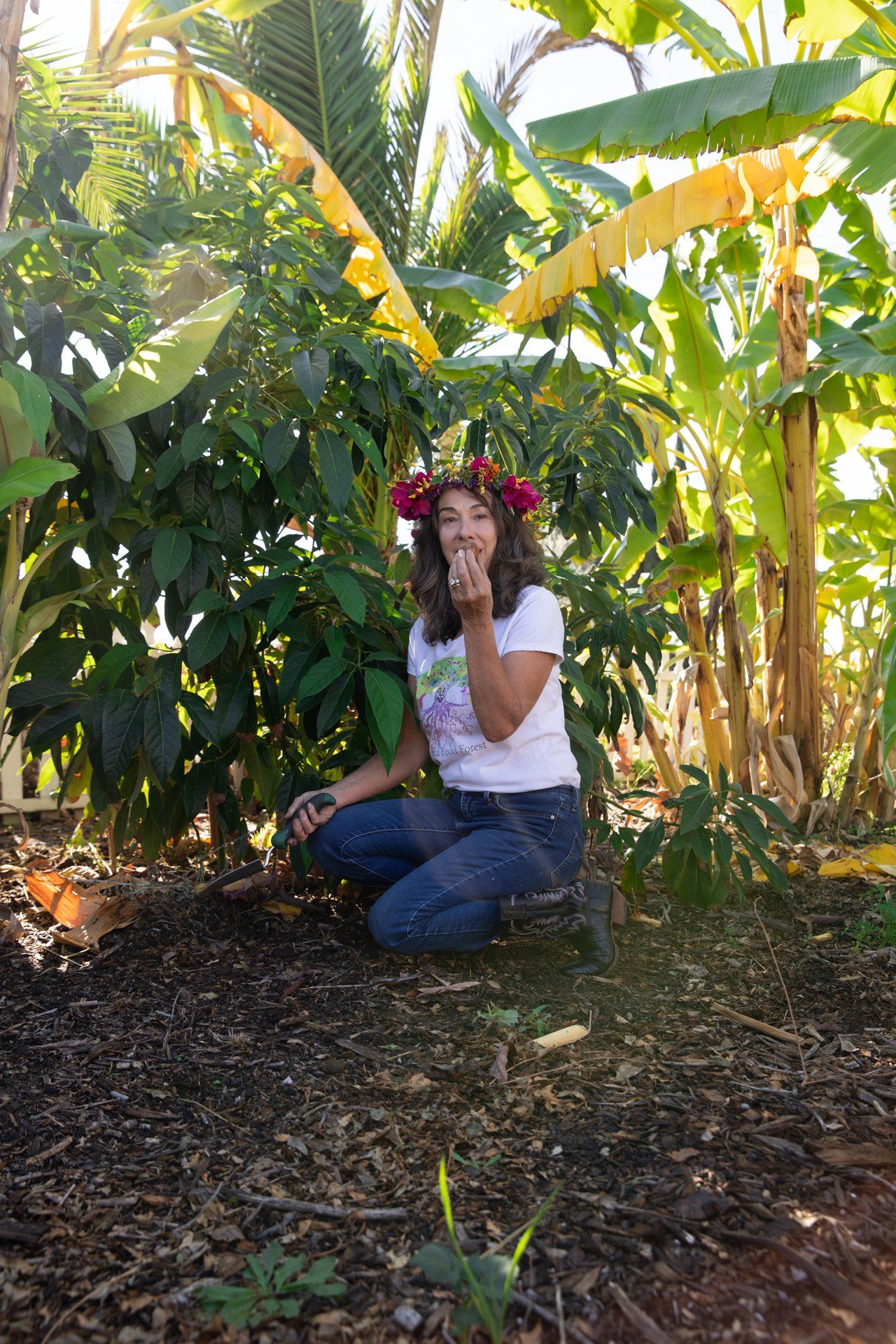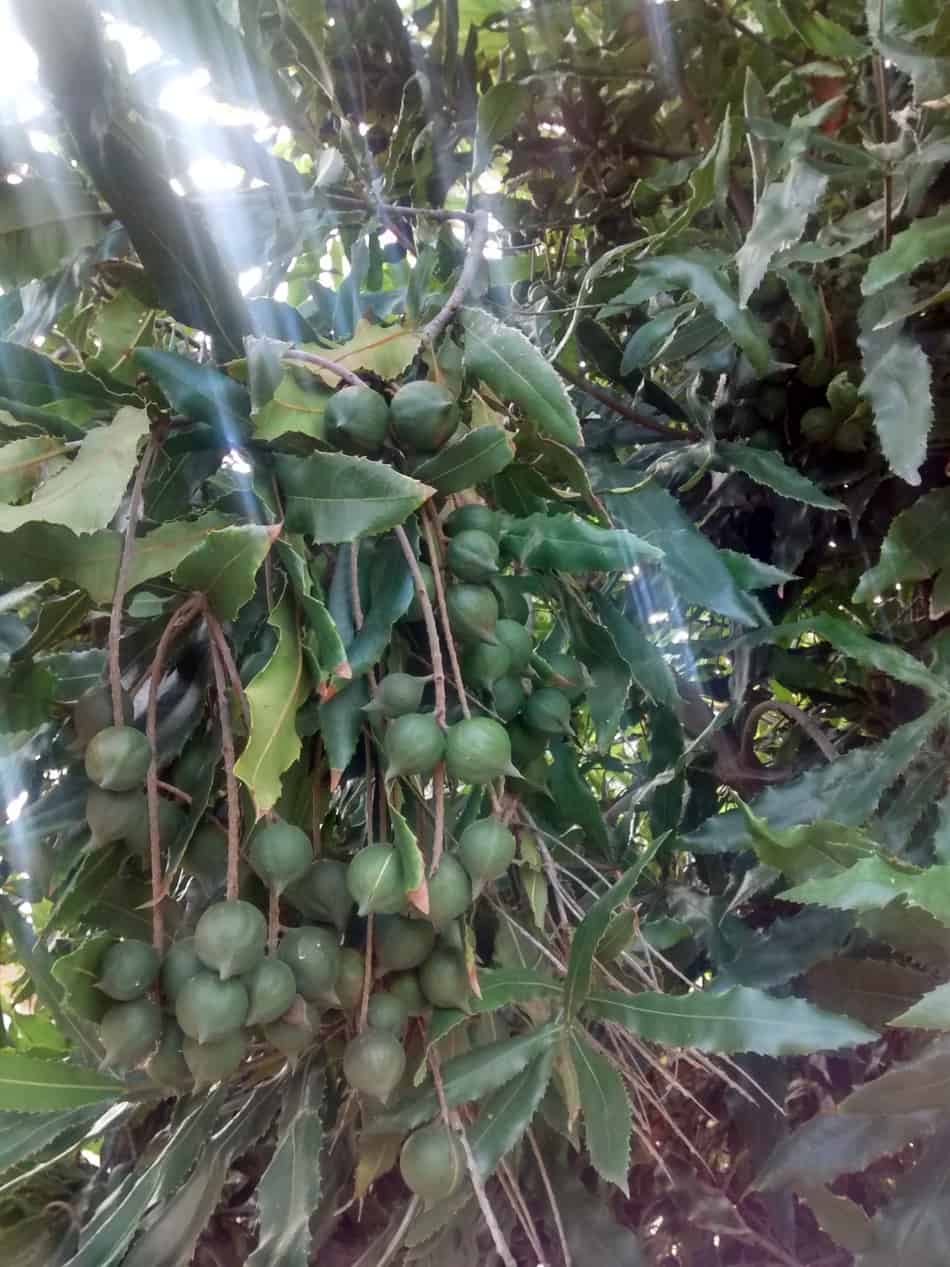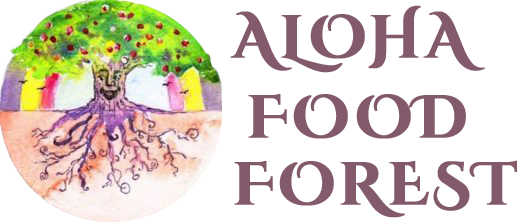Meet and Greet the Weeds – Volunteers Are Growing Good Stuff in your Garden Already!

Flax, Nasturtiums, Feverfew, Wild Lettuce
Native and naturalized plants will grow spontaneously, each contributing specific benefits to help the garden.
They are offering their services, so don’t get mad when they show up for work!
Because plants can’t talk to us, we have to make an effort to learn to recognize them. Although you know many plants by sight already, new volunteers pop up in regularly, so when you meet them, stop and enjoy greeting them and learning to recognize them.
Soon you will know them just as if they are your friends.
When you learn their names first, and then do a little research about each one, you will be so glad you did, because many times you will discover that they grow food for us and the wildlife, first aid medicine, and useful materials. They are also designed to regenerate your soil back to vibrant health
Here’s a wild lettuce seedling, which contains a white sap that works as a pain reliever when applied to the skin!
The more time you spend near plants, the more you will recognize them.
After a while, you learn how a plant looks like as a seed, as a tiny emerging seedling, and as a mature plant because you’ve seen them so many times before.
Calendula flowers and seeds
Calendula seedlings emerging, and newly flowering
You will even be able to tell whether the plant feels healthy or not because you know how they are supposed to look.
You will gain self-confidence as you walk the land, knowing what’s growing.
You will be prepared to guide yourself in making better decisions about what to keep and what to remove.
Sunflowers and Euphorbia Peplus, which contains a toxic and irritating milky latex which is widely known as a therapeutic agent for the removal of warts, corns, waxy lesions, and sun-spots on the skin
Here’s how easy it is to start learning plant names:
Get a smartphone app for plant identification. Choose one that allows you to take a photo with your phone, and suggests possible names. These are available for free or cost only a few dollars in the app store. I use the iNaturalist app, but there are lots of choices!
So get a plant identification app on your phone, if possible, because that’s the easiest way to identify plant names and families.
No smartphone? No problem!
You can do an internet search on any computer for descriptive terms like “tall bush with purple berries” or “yellow flowering groundcover” and look through the images until you see a match.
There are also “online plant guide” sites that will walk you through the characteristics of your plant such as height, leaf type, flowers, and your region of the world.
With so much information out there, you can identify plants that you see if you try.
Once you know the name of a plant, then Wikipedia is an excellent resource for more details, such as plant history, uses, taxonomy, ecology, cultivation, and culture.
You may be amazed to learn that the strange-looking plant you thought was a weird weed had wondrous virtues after all!
“What is a weed? A plant whose virtues have not yet been discovered.”
by Ralph Waldo Emerson
These 150-year-old words ring true today, based on prolific scientific findings published online. Ralph Waldo Emerson would be proud!
Each plant is a unique individual life form, a living expression of Creator God, bringing its gifts and taking what it needs while performing a specific job as part of the overall forest community.
For starters, Pioneer plants will show up and grow up in extreme conditions. By being the first to grow in a harsh environment, and being stronger than most, they provide shelter from winds and extreme temperatures.
A Pioneer Plant taking hold
They start feeding the soil biota, and their presence creates a safer space for new plants to grow and expand the community. All over the planet, sturdy pioneers grow without help from humans. From cacti in the desert to bearberry in the arctic tundra and everything in between, pioneers will get the garden-party started!
Groundcovers will join the community to cover bare soil. Grasses and clovers and strawberries all grow interlocking webs of roots that hold ground in place and enrich soil biota.
A newly emerging sourgrass seedling
Sourgrass in midlife
Yellow Flowering Sourgrass (Oxalis stricta) forming a soft groundcover
Ground-covering creepers and grasses are excellent for stabilizing hillsides against erosion or collapse, and also for creating healthier soils in flat areas.
When flowering plants join the community and spread their seeds around, they attract pollinators and other helpful insects, then lizards and snakes and birds. Soon you have a home for the wildlife in the community too!
Instead of calling them weeds, I like to call the plants that show up and grow up in the garden “volunteers,” which sounds fitting and grateful for plants that grow voluntarily.
By meeting and greeting your volunteers, you will soon understand that volunteers are often doing an excellent job of growing free food/medicine/dye/resources and supporting healthy soil in your forest garden!
I learned from online research that I had some lovely sources of food, first-aid, and materials volunteering to grow around me. I had been uprooting some desirable plants that volunteered to grow here without any effort on my part because I thought they were weeds.
“Although widely regarded as a weed, this species was once one of several plants cultivated by Native Americans in prehistoric North America as part of the Eastern Agricultural Complex. C. berlandieri was a domesticated pseudocereal crop, similar to the closely related quinoa C. quinoa. It continues to be cultivated in Mexico as a pseudocereal, as a leaf vegetable, and for its broccoli-like flowering shoots.” – Wikipedia
How awesome it is that they freely grow and produce, independently of us! That’s a refreshing change for us humans, who are accustomed to putting in a lot of effort to get anything!
Many of the new plants you meet will taste good and satisfy your body’s need for excellent nutrition. Once you learn which plant parts are edible, you can find food all over! Just because we don’t see a specific plant for sale at a grocery store doesn’t make it any less a food source.
You will be a freer and wiser food forester, once you recognize those living around you, by meeting and greeting your volunteers.
Fresh eating and cooking from a food forest are priceless, in terms of getting vitamins, minerals, sunshine, water, and eternal beauty into your body!
Check out these volunteers:
Flax, Nasturtiums, Feverfew
Here blue-flowering flax seed, yellow and orange nasturtium flowers, orange calendula flowers, and feverfew flowers volunteer their services in the food forest. We say thank you all! : )
Fennels and Stinging Nettles growing from seed
Delicious Stinging Nettle volunteered to grow out in the orchard.
Before I met this “volunteer,” I would have considered it unwanted because I didn’t plant it, and have eliminated it from the food forest! I used to think the only edible plants were the ones I planted by my own choice and by my hand. But because now I know better, I treasure it as a favorite crop that shows up and grows up every winter through spring.
Thank goodness the internet helped me identify it by name and learn about its qualities, because now I know to let it grow, and harvest it as if I had planted it myself!
I learned that for thousands of years, it served as an excellent source of food/herbal medicine and even clothing fiber. You can see the results of scientific studies done on the health benefits of stinging nettle by searching on GreenMedInfo.com.
This robust little herb thrives in many environments, and I consider it an “adaptogen.”
a·dapt·o·gen
/əˈdaptəjən/
noun
noun: adaptogen plural noun: adaptogens
(in herbal medicine) A natural substance found to help the body adapt to stress and to exert a normalizing effect upon bodily processes. A well-known example is ginseng.
So I decided to try eating it and bring on the all-around health benefits. It tastes eat-right-out-of-the-pan good! The stems are starchy like potatoes, and the flavor is pleasant.
Harvest this hardy grower daily during its short season by clipping above nodes of new growth. Caution: leaves and stems will sting your skin, so wear gloves as you cut the stems with scissors and drop them into a paper bag. Once dried or cooked, they no longer sting.
I discovered a famous soup recipe featuring stinging nettle, and it is good too! I dry it to use year-round in soups and spaghetti sauce and rice and potatoes and pizza, adding flecks of mild-tasting greens into the food. Use it fresh or dried as a hot tea or a refreshing herbal infused water too.
Wild-lettuce is related to the lettuces we eat regularly, and the leaves are edible and best when young. But the remarkable part of this plant is the harmless white sap that relieves pain when applied on the skin. Break open a leaf and paint the white juice on the palm of your hand and ease a headache instantly! Put the crumbled leaves on an achy back and feel relief immediately. These incidents happened here.
Also, when I’m pruning the plants and get a lot of sap on my skin, I get an overall relaxed feeling, almost sleepy. It is non-addictive and safe to use.
It’s lovely that so many volunteers offer to grow free food for us, and if you look, you will find some helpful volunteers growing free food in your garden too!
Food for thought: Many of the “weeds” we see today were planted and cultivated by people in previous generations, and that’s why there are still so many seeds for them around today!
That doesn’t mean you will have room in your garden for every volunteer, though! You get to focus on growing your favorites!
I hope you enjoy this nugget of gardening wisdom!
I wish you Infinite Abundance, Peace on Earth, and Goodwill to All!
Aloha!
Healthy Soil is the Key to Healthy Plants
